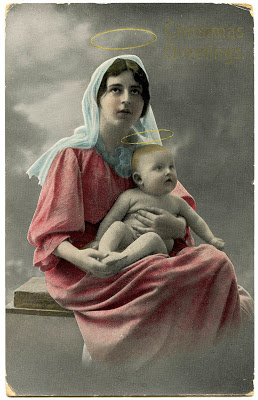The feast of the Holy Name of Mary, celebrated on September 12th, has a long history. It was in 1513 when Pope Julius III gave the permission to the Cuenta diocese in Spain to celebrate The Holy Name of Mary feast. This feast had a proper Office to September 15, the octave of our Lady’s Nativity. As a result of the liturgical reform undertaken by Pope St. Pius V, wherein it was abolished it was Pope Sixtus V that not only reinstated the feast but also moved it to September 17. Following this liturgical move the feast became so popular throughout Spain as well as the Kingdom of Naples.
As time went by, some religious orders were granted permission to celebrate the feast. It was Pope Innocent XI who made “The Feast of the Holy Name of Mary” possible for the entire Church. Initially it started to be celebrated on the Sunday following the Nativity of Mary. However, thanks to a decree, Pope St Pius X commanded that this feast be celebrated on September 12, the reason being that of commemorating the great victory over the Turks at the Battle of Vienna in 1683. When for a short time this feast was mistakenly mixed with that of the Blessed Virgin Mary’s Nativity on September 8, it was re-established for September 12.
Mary’s name is holy because she is the Mother of God. Mary is the holiest of all creatures, designed by the Father, through the Son in the Holy Spirit to be the Queen of heaven and earth. Mary is the Mother of Mercy. In the feast of the Holy Name of Mary we commemorate God’s outstanding love for Mary thanks to the privileges He imparted on her as well as her powerful intercessory role, fully united with that of Her Son Jesus Christ on our behalf, thanks to whom we all received grace upon grace (John 1:16).
Mary’s name is Hebrew is Miryam whereas its Aramaic rendering is Mariam. One interpretation is that it comes from the root merur which means “bitterness”. Both saints and scholars have been attracted by the interesting diversity of interpretations which the name of “Mary” stands for.
For St Isodore of Seville, Mary means enlightener. He writes: Mary means enlightener, because she brought forth the Light of the world. In the Syriac tongue, Mary signifies Lady (St. Isidore of Seville +636). For St Bernard Mary means Star of the Sea. He says: Let me say something concerning this name also, which is interpreted to mean Star of the sea, and admirably suits the Virgin Mother (St. Bernard +1153). For St Aelred Mary is also a stairway to Heaven. He explains: Therefore a certain Star has risen for us today: Our Lady, Saint Mary. Her name means Star of the sea; no doubt the Star of this sea which is the world. Therefore, we ought to lift up our eyes to this Star that has appeared on earth today in order that she may lead us, in order that she may enlighten us, in order that she may show us these steps so that we shall know them, in order that she may help us so that we may be able to ascend. And therefore it is a beautiful thing that Mary is placed in this stairway of which we are speaking, there where we must begin to climb. As the Evangelist says, Jacob begot Joseph, the husband of Mary, so immediately at the very moment of our conversion she appears to us and receives us into her care and enlightens us in her light and accompanies us along this laborious path.” (St Aelred +1167).
St Thomas Aquinas reflects: Mary means Star of the sea, for as mariners are guided to port by the ocean star, so Christians attain to glory through Mary’s maternal intercession“. In a poetic style St Bonaventure explains that the name of Mary has four meanings. He states: This most holy, sweet and worthy name was ’eminently fitted to so holy, sweet and worthy a virgin. For Mary means a bitter sea,2 star of the sea, the illuminated or illuminatrix.3 Mary is interpreted Lady. Mary is a bitter sea to the demons; to men she is the Star of the sea; to the Angels she is illuminatrix, and to all creatures she is Lady (St Bonaventure +1274).
For St Louis de Montfort Mary means the summation of God’s graces. He writes: God the Father gathered all the waters together and called them the seas or maria [Latin, seas]. He gathered all His grace together and called it Mary or Maria . . . This immense treasury is none other than Mary whom the saints call the ‘treasury of the Lord.’ From her fullness all men are made rich (St. Louis de Montfort +1716).
While honouring the Name of the Tota Pulchra, the Beautiful One, let us now pray the subsequent prayer which greatly honours the Name of Mary, accompanied by St Alphonsus de Liguori:
O great Mother of God and my Mother Mary, it is true that I am unworthy to name thee; but thou, who lovest me and desirest my salvation, must, notwithstanding the impurity of my tongue, grant that I may always invoke thy most holy and powerful name in my aid, for thy name is the succor of the living, and the salvation of the dying. Ah, most pure Mary, most sweet Mary, grant that henceforth thy name may be the breath of my life. O Lady, delay not to help me when I invoke thee, for in all the temptations which assail me, and in all my wants, I will never cease calling upon thee, and repeating again and again, Mary, Mary. Thus it is that I hope to act during my life, and more particularly at death, that after that last struggle I may eternally praise thy beloved name in heaven, O clement, O pious, O sweet Virgin Mary.
Ah, Mary, most amiable Mary, with what consolation, what sweetness, what confidence, what tenderness, is my soul penetrated in only naming, in only thinking of thee! I thank my Lord and God, who, for my good, has given thee a name so sweet and deserving of love, and at the same time so powerful. But, my sovereign Lady, I am not satisfied with only naming thee, I wish to name thee with love: I desire that my love may every hour remind me to call on thee, so that I may be able to exclaim with St. Bonaventure, “O name of the Mother of God, thou art my love.” My own dear Mary, O my beloved Jesus, may your most sweet names reign in my heart, and in all hearts. Grant that I may forget all others to remember, and always invoke, your adorable names alone. Ah! Jesus my Redeemer, and my Mother Mary, when the moment of death comes when I must breathe forth my soul and leave this worid, deign, through your merits, to grant that I may then pronounce my last words, and that they may be, “I love thee, O Jesus; I love thee, O Mary; to you do I give my heart and my soul.” Amen.










